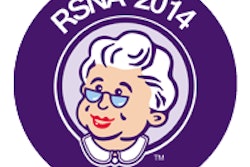The controversy over the effect of mammographic screening on breast cancer mortality is largely contrived, according to study results presented on December 11 at the San Antonio Breast Cancer Symposium (SABCS).
Robert A. Smith, PhD, of the American Cancer Society in Atlanta, Dr. Stephen Duffy of Queen Mary University of London, Dr. László Tabár of Falun Central Hospital in Sweden, and colleagues examined data from four large studies on the benefits and harms of mammography screening. Smith presented their work at the symposium, which is sponsored by the American Association for Cancer Research (AACR).
The research was also published last month in the journal Breast Cancer Management (November 2013, Vol. 2:6, pp. 519-528). The group found that once the data were standardized to a common screening scenario, the degree of difference between studies dropped dramatically.
"We wanted to understand why these estimates differ so much," Smith said in a press conference. "What we found was that the estimates are all based on different situations, with different age groups being screened, different screening and follow-up periods, and different in whether they refer to the number of women invited for screening or the number of women actually screened."
"When we standardized all the estimates to a common scenario -- the same exposure to screening, and a similar target population, period of screening, and duration of follow-up -- the magnitude of the difference between studies dropped from 20-fold to fourfold," he said.
Absolute mortality benefit
Although it is generally accepted that screening with mammography prevents deaths from breast cancer, debate continues about its absolute mortality benefit and the risks associated with screening, Smith said. Among these risks, the most highly publicized in recent years is overdiagnosis.
Recent observational studies have claimed to find little benefit in terms of reducing mortality or late-stage disease, along with high rates of overdiagnosis. These studies have sparked controversy as well as further debate on topics such as what age women should begin and end screening, the interaction of screening and advances in therapy, and the potential for replacing general screening recommendations based on age with individually tailored risk-based screening, according to the group.
Smith and colleagues compared the Nordic Cochrane review, the U.K. Independent Breast Screening review, the U.S. Preventive Services Task Force (USPSTF) review, and the European Screening Network (EUROSCREEN) review. They converted all of these to the same scenario as used in the U.K. review: the effect of screening U.K. women ages 50 to 69 for 20 years on breast cancer mortality at ages 55 to 79. Why? Because the U.K. review used a standard screening population and was conducted by an independent group of experts with no background in breast cancer screening to avoid bias, Smith said.
"Measuring the effectiveness of breast cancer screening in terms of reduced mortality depends on evaluating the relative risk, whether the intervention is measured by invitation to screening or actual screening, and the duration of follow-up," he said. "The difference between the number of women needed to invite and the number needed to screen to reduce breast cancer death is critical: If you want to measure effectiveness, a letter of invitation doesn't do any good. Women have to show up for mammography in order to benefit from it."
After standardizing the three reviews to the U.K. Independent Breast Screening scenario, the magnitude of difference between studies in the estimated number of women needed to be screened to prevent one breast cancer death dropped, the researchers found. The Nordic Cochrane review estimate for the number of women who must be screened to prevent one breast cancer death decreased from 2,000 to 257; the USPSTF estimate dropped from 1,339 for women 50 to 59 and 337 for women 60 to 69 to 193 for women 50 to 69; and the EUROSCREEN estimate decreased from 111 to 64.
Contrived controversy
The controversy over the benefit of mammography screening as estimated from the trials is largely contrived, the group concluded.
"When the absolute benefit of screening mammography is standardized by population, screening scenario, and follow-up time, the differences between the studies are not significant -- certainly not enough to question the value of mammography over a lifetime of screening," Smith said.
How well does this information speak to concerns about mammography screening's benefits? It depends on one's point of view, according to Smith.
"The issues we've addressed in this study have been pointed out in the literature over and over again," he said. "The notion that long-term follow-up is needed to really establish screening mammography's absolute benefit ought to be universally accepted, but it isn't. So although we standardized the data from these four studies to a common scenario, some researchers may say we shouldn't have done that."



















